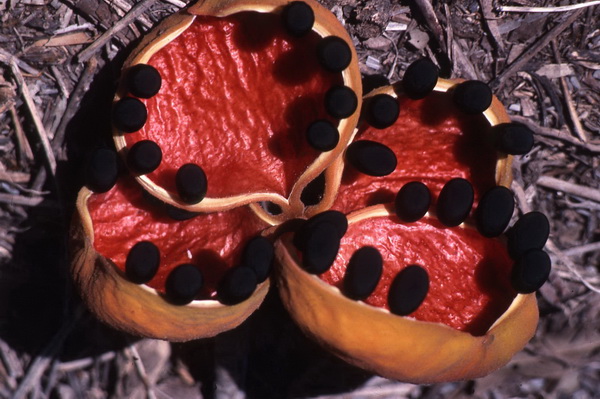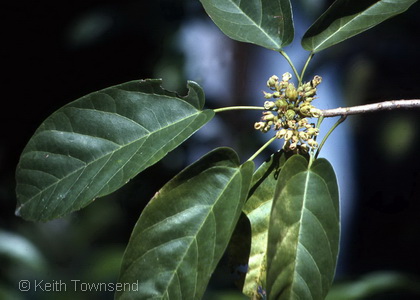Peanut Tree

Form and Size: A small, straight tree, usually 5-10m high, with a spreading canopy; deciduous
Distribution: Across northern tropical Australia and down the east coast to northern NSW; in monsoon forests,
vine thickets and along waterways
Leaves: Broadly egg-shaped, sometimes heart-shaped at the base, dark green and smooth above, paler and finely hairy with tiny pores beneath, veins prominent, clustered towards the ends of branchlets, 9-20cm x 5-17cm; stalk 4-10cm long
Bark: Light grey, tight, smooth
Flowers: Greenish-yellow, softly hairy, somewhat bell-shaped, 0.5-1.0cm x 0.4-0.6cm;
borne in small clusters in the upper axils
Flowering Period: November to January
Fruit: Follicles, smooth, leathery, egg-shaped, 4-7cm x 2-3cm, orange to red when ripe, opening when ripe to boat-shape, bright red inside; up to 8 shiny black seeds the size and shape of a peanut
Cultivation/Notes: Propagate from seed
Hardy and fairly fast growing, it will prosper in most well drained soils
Useful as a shade or shelter tree and good for coastal stabilisation work
The seeds are edible and many parts of the tree were used by Aborigines
